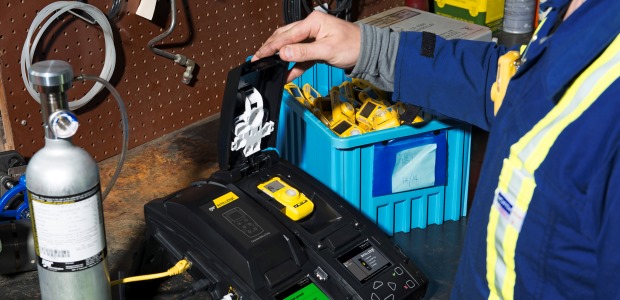
Selecting the Right Gas Detection Solution
Temperature, humidity, and pressure levels at the location all have a direct bearing on the type of equipment that should be selected.
- By Praveen Sharma
- Jun 01, 2016
There are many gas detection products on the market that might appear to be the same, but a closer inspection of specification, functionality, and features reveals major differences in what products can do and the potential value they can offer. Similarly, individual applications are also unique in their respective designs, needs, and processes undertaken.
Know Your Site Risks
Before beginning to consider gas detection equipment, a risk assessment needs to be conducted. Any company employing staff has the obligation to conduct risk assessments to identify potential hazards, and these can include potential gas, vapor, or oxygen deficiency risks.
If gas hazards are identified, gas detection is applicable as a risk reduction method. Regulatory bodies such as OSHA, EPA, NIOSH, and others are enacting new laws and standards related to worker safety, so it is necessary to review the current regulatory landscape to understand company requirements for compliance.
Identifying the Prime Objective
Depending on the processes being undertaken and the gases being detected, remote or off-site alarm notification plus event data logging/reporting may also be required for health and safety management records. Technology improvements such as cellular and satellite communications, integrated with cloud software, database, and status tracking, are making this increasingly user friendly and cost effective for companies that use portable gas detectors. Another factor impacting on the need for enhanced reporting functions might be regulatory compliance or a condition of insurance.
Ask the Right Questions
Having identified the primary objective, the suitable equipment is selected by asking a number of key questions. These fall into three broad categories:
- What are the gases to be detected, and where do they come from?
- What are the risk exposures of the location and the environmental conditions where detection is to take place?
- What is the total cost of ownership (not simply purchase cost), spread out over the life of the unit for gas detection? This is particularly important when a large fleet of gas detectors is being deployed.
- How easy or intuitive is it to operate the gas detectors for the benefit of workers and routine servicing personnel?
Identify the gases to be detected and where they may come from
The gases to be detected should be identified by the risk assessment, however, experienced gas detection equipment manufacturers and their approved distributors are often able to help in this process, based on their experience of similar applications. However, it is important to remember that it is the end user's responsibility to identify all potential hazards. When in doubt, a broadband monitor with a photoionization detector, or PID, should be utilized. It is also essential to identify the potential source of a gas release because this helps determine the number and location of detectors required for a fixed gas detection system.
Consider the environmental conditions
Different environments encounter different degrees of risk, and for higher-risk environments or situations involving a remote worker, real-time information and communication may be needed, which is an advantage of wireless gas monitoring systems.
The performance, accuracy, and reliability of any gas detection equipment will be affected by the environmental conditions it is subjected to. Temperature, humidity, and pressure levels at the location all have a direct bearing on the type of equipment that should be selected. Additional factors such as potential variations resulting from the production process itself, diurnal/nocturnal fluctuations, and seasonal changes also may affect the type of device that is suitable.
Understand product functionality
The next area of consideration relates to additional product functionality. Aspects such as wiring configuration are important, especially when retro-fitting into an existing application. If the apparatus is being integrated into a separate safety system, certain communication protocols may also be required, such as HART®, Lonworks, or Modbus®. Remember, too, that it isn't just the product, but also the accessories, infrastructure, and software that may need to be evaluated.
Because safety instrumentation is an investment, insurance against evolving requirements also should be considered.
Understand ecosystem functionality
What is required in addition to the gas detector? Things such as docking stations for portable units or transmitters for fixed units should be evaluated. These units may include microprocessors and software to control and track the device. his has been common on fixed devices, but with improvements in functionality, it is becoming more prevalent on portable units.
Measure the Ease of Use for Operators and Maintenance Personnel in the Light of Overall Cost of Ownership
Routine maintenance is an important consideration. It pays to know just how reliable a gas detector is. Some gases and vapors can be detected with a number of different sensing technologies (e.g., hydrocarbon gases with catalytic beads or non-dispersive infrared, NDIR).
Catalytic beads do not provide fail-to-safety operation and therefore can require a high frequency of routine maintenance, however, NDIR-based solutions tend to have a higher initial purchase price but may require less routine maintenance. An in-house resource to undertake routine maintenance needs to be identified and, in the absence of such a resource, budgeting for third-party maintenance is an important factor in selecting the right equipment.
Another frequently overlooked area is calibration gas and bump speeds for portables. Manufacturers have developed instrument management systems, or "dock stations" as they are popularly called, that now combine smart docking modules with software to make the unit more flexible, configurable, and maintenance free while speeding up the time required to complete a functional, or "bump test."
This article originally appeared in the June 2016 issue of Occupational Health & Safety.